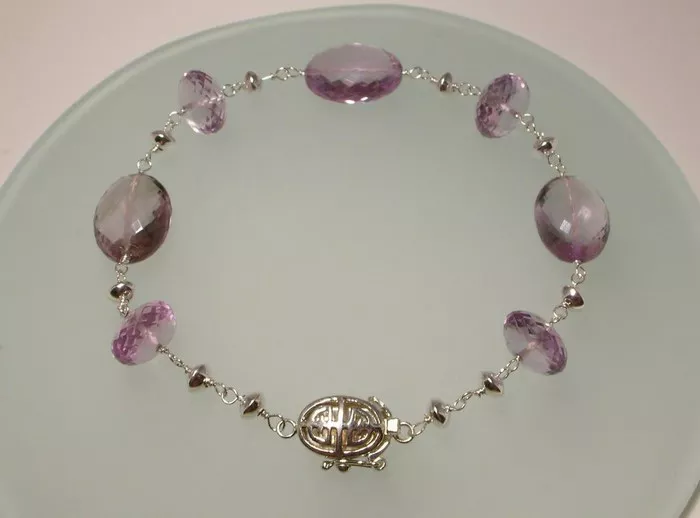Diamond bracelets are not just exquisite pieces of jewelry; they are also investments that require proper care and maintenance to preserve their beauty and longevity. One common question that arises among diamond bracelet owners is whether these luxurious accessories can withstand exposure to water. Understanding how water affects diamond bracelets and the best practices for their care is essential for ensuring they retain their sparkle and allure for years to come.
Understanding the Composition of Diamond Bracelets
Before delving into the effects of water on diamond bracelets, it’s important to understand their composition. Diamond bracelets typically consist of diamonds set in a metal framework, such as gold, white gold, platinum, or silver. The diamonds themselves are highly durable and resistant to scratching, thanks to their hardness on the Mohs scale. However, the settings and the metal bands that hold the diamonds in place can be affected by prolonged exposure to water and other elements.
See Also: How Can You Tell if a Stone Bracelet Is Real?
Effects of Water on Diamond Bracelets
While diamonds themselves are virtually impervious to water, the settings and metals used in diamond bracelets can be susceptible to damage if exposed to water over extended periods. Here are some potential effects of water exposure on diamond bracelets:
Metal Corrosion: Metals such as gold and silver can tarnish when exposed to water and air over time. Chlorinated water, in particular, can accelerate this process. Tarnishing can dull the shine of the metal setting, affecting the overall appearance of the bracelet.
Loosening of Settings: Water exposure, especially in hot water or under pressure (e.g., during swimming or bathing), can weaken the prongs or settings that hold diamonds in place. This may increase the risk of diamonds becoming loose or falling out of the bracelet.
Damage to Other Materials: Some diamond bracelets may incorporate materials other than diamonds and metal, such as leather or fabric. Water exposure can cause these materials to warp, stretch, or deteriorate, compromising the integrity of the bracelet.
Residue Build-up: Minerals and chemicals present in water, such as chlorine and salt, can leave residues on the surface of the bracelet. These residues can accumulate over time, affecting the brilliance of diamonds and the appearance of the metal setting.
Factors Affecting Water Resistance
Several factors determine how well a diamond bracelet can withstand water exposure:
Type of Setting: The way diamonds are set in the bracelet can influence its water resistance. Bracelets with secure settings, such as bezel or channel settings, offer better protection to diamonds compared to bracelets with prong settings, where diamonds are more exposed.
Type of Metal: Different metals have varying levels of resistance to water and corrosion. For example, platinum is highly resistant to tarnishing and corrosion, making it a durable choice for diamond bracelets. On the other hand, gold and silver may require more frequent maintenance to prevent tarnishing.
Design and Construction: The overall design and construction of the bracelet play a role in its water resistance. Bracelets with intricate designs or multiple components (e.g., clasps, hinges) may have more areas where water can penetrate, potentially causing damage over time.
Usage and Care: How you wear and care for your diamond bracelet also impacts its longevity. Regular maintenance and avoiding prolonged exposure to water can help mitigate potential damage and preserve the bracelet’s beauty.
Best Practices for Protecting Diamond Bracelets
While diamond bracelets can tolerate occasional exposure to water, taking preventive measures and adopting proper care practices can help extend their lifespan and maintain their pristine appearance:
Remove Before Water Activities: To minimize the risk of damage, remove diamond bracelets before engaging in activities where they may come into contact with water. This includes swimming, showering, washing dishes, or using cleaning products.
Avoid Chemical Exposure: Chemicals present in cleaning agents, lotions, perfumes, and cosmetics can also damage diamond bracelets. Apply these products before putting on your bracelet and allow them to dry completely before wearing it.
Regular Cleaning: Clean diamond bracelets regularly using a soft-bristled brush, mild soap, and lukewarm water. Gently scrub the diamonds and metal settings to remove dirt and residue, then rinse thoroughly and dry with a soft, lint-free cloth.
Store Properly: When not wearing your diamond bracelet, store it in a soft pouch or lined jewelry box to prevent scratches and minimize exposure to air and moisture. Keep each bracelet separate to avoid tangling and friction with other jewelry pieces.
Professional Maintenance: Periodically have your diamond bracelet inspected by a professional jeweler. They can check for loose stones, worn settings, or signs of damage that may require repair. Professional cleaning and polishing can restore the brilliance of diamonds and maintain the integrity of the bracelet.
Conclusion
Diamond bracelets are treasured pieces of jewelry that require careful attention to maintain their beauty and value. While diamonds themselves are resilient to water, the settings and metals used in diamond bracelets can be susceptible to damage if exposed to water over time. By understanding the potential effects of water exposure and adopting best practices for care and maintenance, you can ensure that your diamond bracelet remains a stunning symbol of elegance for years to come. Whether worn daily or reserved for special occasions, proper care will help preserve its sparkle and allure, allowing you to enjoy your investment in fine jewelry with confidence and pride.


